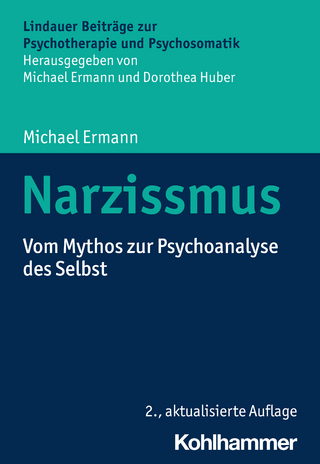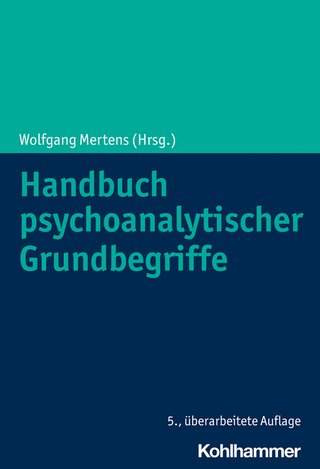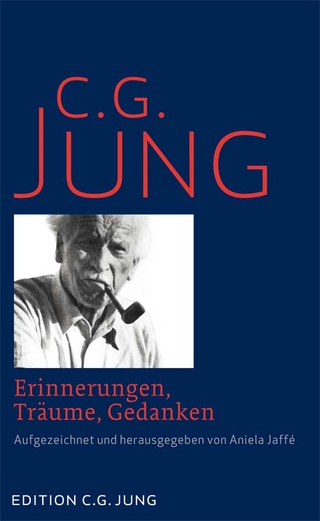
Dissociation and the Dissociative Disorders
Routledge (Verlag)
978-0-367-52279-7 (ISBN)
This book is essential for clinicians, researchers, theoreticians, students of clinical psychology psychiatry, and psychotherapy, and those with an interest or curiosity in dissociation in the various ways it can be conceived and studied.
Martin J. Dorahy, PhD, is Professor of Clinical Psychology at the University of Canterbury, Christchurch, New Zealand, and a past president of the International Society for the Study of Trauma and Dissociation (ISSTD). Steven N. Gold, PhD, is Professor Emeritus of Psychology at Nova Southeastern University; a past president and fellow of the ISSTD and APA Division of Trauma Psychology; and a founding editor of the APA journal, Psychological Trauma. John A. O’Neil, MD, FRCPC, is a psychiatrist and psychoanalyst in Montreal, Québec, Canada, and a fellow of the ISSTD. He co-edited, with Paul Dell, the first edition of this book.
1.History of the Concept of Dissociation
Onno van der Hart & Martin J. Dorahy
2.The Conceptual Unity of Dissociation – A Philosophical Argument
Stephen E. Braude
3.The Traumatic Disintegration Dimension
Benedetto Farina & Russell Meares
4.Dissociation Versus Alterations in Consciousness: Related but Different Concepts
Kathy Steele, Martin J. Dorahy, & Onno van der Hart
5.The Case for the Study of "Normal" Dissociation Processes
Constance J. Dalenberg, Rachel R. Katz, Kenneth J. Thompson & Kelsey Paulson
6.Dissociation and Resilience
Paula Thomson
7.Adaptive Dissociation: A Response to Interpersonal, Institutional, and Cultural Betrayal
Alexis A. Adams-Clark, Jennifer M. Gómez & M. Rose Barlow
8.Dissociative Multiplicity and Psychoanalysis
John A. O’Neil
Section 2: Etiological and developmental considerations
9.A Developmental Pathways Model of Dissociation
Linnea B. Linde-Krieger, Tuppett M. Yates & Elizabeth A. Carlson
10.The Relationship Between Attachment and Dissociation: Theory, Research, and Clinical implications
Adriano Schimmenti
11.Attachment Trauma and the Developing Right Brain: Origins of Pathological Dissociation and Some Implications for psychotherapy
Allan N. Schore
12.Adverse Childhood Experiences and Dissociative Disorders: A Causal Pathway Based on the Disruptive Impacts of Cumulative Childhood Adversity and Distress-Related Dissociation
Michael Quiñones
13.Beyond Death: Enduring Incest – The Fusion of Father With Daughter
Warwick Middleton
14.Clarifying the Etiology of the Dissociative Disorders: It’s Not All About Trauma
Paul F Dell
Section 3: Theoretical approaches
15.The Theory of Trauma-related Structural Dissociation of the Personality
Onno van der Hart & Kathy Steele
16.Discrete Behavioral State Theory
Richard J. Loewenstein & Frank W. Putnam
17.The Perceptual Theory of Dissociation
Donald B. Beere
18.Contextual Dissociation Theory: The Dual Impact of Trauma and Developmental Deprivation
Steven N. Gold
19.The Four-Dimensional (4D) Model as a Framework for Understanding Trauma-Related Dissociation
Paul A. Frewen, Serena Wong & Ruth A. Lanius
20.Dissociation and Unformulated Experience: A Psychoanalytic Model of Mind
Donnel B. Stern
Section 4: The Dissociative Disorders
21.Dissociation in the ICDs and DSMs
John A. O’Neil
22.Dissociative Amnesia and Dissociative Fugue
Colin A. Ross
23.Depersonalization/Derealization Disorder
Matthias Michal
24.A Grounded Theory of Dissociative Identity disorder: Placing DID in Mind, Brain, and Body
Lauren A. M. Lebois, Chloe S. Kaplan, Cori A. Palermo, Xi Pan & Milissa L. Kaufman
25.Psychotic Presentations of Dissociative Disorders
Vedat Şar
26.The Other in the Self: Possession, Trance, and Related Phenomena
Etzel Cardeña, Yvonne Schaffler & Marjolein van Duijl
27.Dissociative Disorders in Children and Adolescents
Joyanna Silberg & Stephanie Dallam
Section 5: Dissociation as a transdiagnostic process – acute and chronic
28.Peritraumatic Dissociation and Chronic Posttraumatic Symptomatology: Thirty Years and Counting
Etzel Cardeña & Catherine C. Classen
29.Dissociation and Trauma: Clinical and Research Intersections in PTSD
Olga Winkler, Lisa Burback, Suzette Bremault-Phillips & Eric Vermetten
30.Complex PTSD and Emotion Dysregulation: The Role of Dissociation
Julian D. Ford
31.Is Dissociation an Integral Aspect of Borderline Personality Disorder, or is it a Comorbid Disorder?
Marilyn I. Korzekwa & Paul F. Dell
32.The Nature of Psychotic Symptoms: Traumatic in Origin and Dissociative in Kind?
Andrew Moskowitz, Eleanor Longden, Filippo Varese, Dolores Mosquera,
& John Read
33.Somatoform Dissociation, Agency and Consciousness
Ellert R. S. Nijenhuis
34.Maladaptive Daydreaming is a Dissociative Disorder: Supporting Evidence and Theory
Nirit Soffer-Dudek & Eli Somer
35.Opioid Misuse and Dissociation: Two Powerful Modes of Distress Regulation
Eli Somer
36.Dissociative Factors Contributing to Violence and Antisocial Orientations
Richard A. Hohfeler
Section 6: Neurobiological and cognitive understandings of dissociation
37.The Defense Cascade, Traumatic Dissociation and the Self: A Neuroscientific Model
Frank M. Corrigan, Ulrich F. Lanius & Brenna Kaschor
38.Towards an Ecology of Dissociation in the Context of Trauma: Implications for the Psychobiological Study of Dissociative Disorders
Ellert R. S. Nijenhuis
39.The Neurobiology of Dissociation in Chronic PTSD
Francesca L. Schiavone & Ruth A. Lanius
40.Subjective Amnesia in Dissociative Identity Disorder: A Dual Path Model Drawing on Metacognitive Beliefs Related to Self and Memory Functioning
Martin J. Dorahy
Section 7: Assessment and measurement
41.Diagnosing the Dissociative Disorders: Conceptual, Theoretical, and Practical Considerations
D. Michael Coy & Jennifer A. Madere
42.True Drama or True Trauma? Forensic Trauma Assessment and the Challenge of Detecting Malingering
Bethany L. Brand & Laura S. Brown
Section 8: Treatment considerations and conceptualizations
43.Encountering the Singularities of Multiplicity: Meeting and Treating the Unique Person
Richard P. Kluft
44.Controversies in the Treatment of Traumatic Dissociation:The Phased Model, ‘Exposure,’ and the Challenges of Therapy for Complex Trauma
Pam Stavropoulos & David Elliott
45.The Unconscionable in the Unconscious: The Evolution of Relationality in the Conceptualization of the Treatment of Trauma and Dissociation
Elizabeth F. Howell & Sheldon Itzkowitz
Section 9: Treatment challenges and therapist considerations
46.Memory, Trauma and the Therapeutic Encounter
Sylvia Solinski
47.Conceptual Foundations for Long-Term Psychotherapy of Dissociative Identity Disorder
Richard J. Loewenstein
Section 10: The future
48.A Research Agenda for the Dissociative Disorders Field
Vedat Şar & Colin A. Ross
49.Integrating Dissociation
David Spiegel
| Erscheinungsdatum | 14.09.2022 |
|---|---|
| Zusatzinfo | 28 Tables, black and white; 12 Line drawings, black and white; 12 Illustrations, black and white |
| Verlagsort | London |
| Sprache | englisch |
| Maße | 210 x 280 mm |
| Gewicht | 2280 g |
| Themenwelt | Geisteswissenschaften ► Psychologie ► Psychoanalyse / Tiefenpsychologie |
| Medizin / Pharmazie ► Medizinische Fachgebiete ► Psychiatrie / Psychotherapie | |
| ISBN-10 | 0-367-52279-9 / 0367522799 |
| ISBN-13 | 978-0-367-52279-7 / 9780367522797 |
| Zustand | Neuware |
| Haben Sie eine Frage zum Produkt? |
aus dem Bereich


